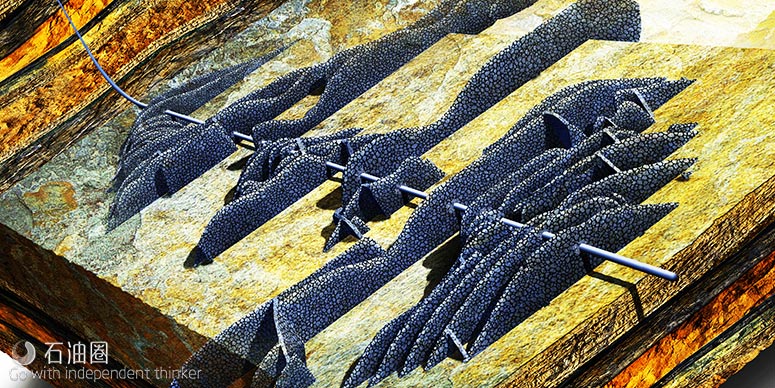Last time we talked, the subject was high-energy gas fracturing, a method that offers the alluring possibility of eliminating the use of water, the sourcing and disposal of which—as proliferating offers of solutions indicate—is a major headache in hydraulic fracturing. But, it’s not the only potential alternative that could make an end run around water. There are more, and several of these are particularly interesting. Today, let’s take a look at a few, courtesy of “An overview of hydraulic fracturing and other formation stimulation technologies for shale gas production,” issued by the European Union’s Joint Research Centre Institute for Energy and Transport.
It’s quite a catalog. You never know; as technologies advance and requirements change, maybe one or more of these will get mainstreamed.
First, the report’s caveat: “Advantages and disadvantages of any applied technology are, in most cases, dependent on the specific situation under which formation stimulation is performed (location, formation characteristics, etc.). In this report, no objective criteria were developed and applied to identify potential advantages and disadvantages of each technique. As an example, when it is noted that a certain technology leads to ‘reduced water usage,’ this is not a judgment to whether there is an environmental, economic or otherwise need to reduce water consumption, and whether the alternative is overall a better choice. Such a choice would typically depend on the specific condition for a given situation.”
Foam-based fluids. Foams are being used in a number of petroleum industry applications that exploit their high viscosity and low liquid content. Some of the earliest applications for foam dealt with its use as a displacing agent in porous media and as a drilling fluid. In the mid-1970s, N2-based foams became popular for both hydraulic fracturing and fracture acidizing stimulation treatments.
Most recently, CO2 foams have been found to exhibit their usefulness in hydraulic fracturing stimulation. Advantages include reducing or eliminating water usage, a reduced amount of chemical additives, a reduction of formation damage, and/or better cleanup of the residual fluid.
The report notes that foams are used commercially to fracture shale formations. For instance, foams have been used to stimulate gas wells in the Lower Huron shale in the Appalachian basin and in Big Sandy (a productive field of more than 25,000 wells, in the eastern U.S.), characterized by ultra-low permeability, the Berea tight gas sands and Devonian Ohio shales, such as the Huron formation.
Cryogenic fluids. It appears that in liquid form, the planet’s current bête noire—CO2—can have a beneficial use. And, as the report suggests, it potentially can solve its own problem: An important feature is the fact that the CO2 adsorption capacity with shale is stronger than that of methane (CH4). Thus, it can replace CH4 in the shale formation, enhancing gas production and, at the same time, remain locked underground. At reservoir conditions, CO2 adsorption exceeded CH4 adsorption by a factor of five, suggesting that CO2 enhanced gas recovery from shale could serve as a promising means to reduce life cycle CO2 emission for shale gas. On a strictly volumetric basis, gas shales have the potential to sequester large amounts of CO2 provided that CO2 can diffuse deep into the matrix. When taken into fracturing, it can cause much more complicated fractures for its lower viscosity property, which has a benefit to shale gas exploitation.
After the treatment, the evaluation of a fractured zone can take place almost immediately, because of rapid clean-up. The energy provided by CO2 results in the elimination of all residual liquid left in the formation from the fracturing fluid. The gaseous CO2 also aids in lifting formation fluids that are produced back during the clean-up operation.
The biggest advantage is that the CO2 adds no pollution to the environment, and it can have a positive net effect, when considering the greenhouse gas emissions issue. An article in New Scientist recently discussed the possibility that fracturing with CO2 could spur the development of large-scale carbon sequestration.
Fracturing with dynamic loading. We discussed one form of explosive fracturing last time. Another one, of several such methods, is plasma stimulation and fracturing (PSF) technology. According to the inventor, this technology creates multiple radial fractures of self-propped type fractures by fast-expanding plasma, generated using a proprietary, high-energy, pulsed-power electrical discharge technique. While the plasma tool can create multiple radial fractures that are 5 to 20 ft in length, the addition of the pulse stepping algorithm can extend these fractures by more than 50 ft. The radial fractures created by PSF are self-propped because of shear displacement.
Other methods. This is where it really gets outside of the box. Among the other solutions are thermal (cryogenic) fracturing, enhanced bacterial methanogenesis, and even mechanical cutting of the shale formation. Perhaps thermal fracturing—achieved by using a fluid colder than the reservoir to create thermal stresses, that could fracture the rock—should have an asterisk. Even if a fluid is used, this is not—strictly speaking—hydraulic fracturing in the traditional sense, because it is not the elevated pressure of the fluid and high injection rates that break the rock.
More on that next time, when we take a closer look at some of these methods. Exotic they may be, but nothing stays the same in this business, and that includes fracturing. Handicapping the technology horse race is a sucker’s bet; under the right conditions, anything could come charging from the back of the pack.

 石油圈
石油圈
